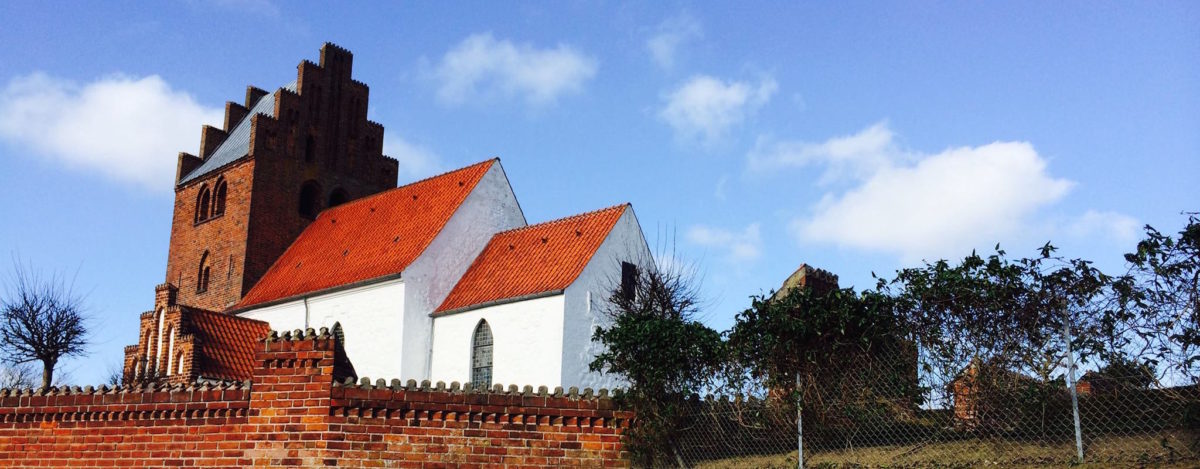Living in Denmark
 For nine months, I called the town of Måløv home. The halos and slashes over and through the vowels are an indicator that this is a Danish town. Denmark is known as the Happiest Country in the World, along with Copenhagen being the Biking Capital of the World. The high education standards, equality amongst men and women, and the social welfare state attract students from across the world. I am there to learn about European environmental policy at the Danish Institute of Study Abroad, known locally as DIS.
For nine months, I called the town of Måløv home. The halos and slashes over and through the vowels are an indicator that this is a Danish town. Denmark is known as the Happiest Country in the World, along with Copenhagen being the Biking Capital of the World. The high education standards, equality amongst men and women, and the social welfare state attract students from across the world. I am there to learn about European environmental policy at the Danish Institute of Study Abroad, known locally as DIS.
The first issue arises before I even leave my own bedroom. With knees bent over the side of the bed and elbows propped up, I stare down at the floor scattered with winter clothes, hiking boots, scarves and hats, and, of course, a lot of diabetic supplies.
“Do I need anything else? Do I need any of this at all?” Google provides no answers. Siri does not help either.
Another fact about Denmark is that they hold the secret recipe for insulin. Only joking … sort of. Novo Nordisk is headquartered in this small Scandinavian country. In theory, picking up any additional medicine while abroad should be easy. Right?
The second issue also arises before I leave my home. One rule my mom insists on, and I echo the sentiment, is this: “If you study abroad you must live with a host family.”
Diabetes, outside of our inner community, is frequently misunderstood. My potential host dad demands that he cannot have a student who can’t eat meat. I eat meat and so can any person with diabetes. What’s the problem? An exchange of emails is sent back and forth with my real dad explaining that people with diabetes have practically no limitations including the ability to eat meat. Jens agrees to let me live with him.
The first days of being in a foreign country are always a challenge for an explorer with diabetes. You are in this new place, with a new language and completely new food. The Danes are known for two things: pork and pastries. Mmmm.
I walk down the cobblestone streets filled with pastel houses on the way to class and get lured into every bakery with golden flakey dough coated in sugar. Where do you think a Danish comes from? Take an extra big bolus and enjoy.
As I begin to explore the city I fall in love. I love seeing a mother pedal her husband and kids on a cargo bike; I love the blue and yellow houses lining the harbor with sail boats anchored by the café; I love that right in the center of the city is Tivoli, the amusement park that inspired Disneyland.
Listening to everyone’s advice, I extend my stay into the summer to work with an architectural firm. This means 90 more days of medical supplies. Where is that going to come from?
I’m referred to see an endocrinologist located on the same site as one of the Novo Nordisk offices. A difference between a doctor’s office in the U.S. and Denmark is that patients take a number when arriving, like how Americans queue at the deli. (As a small aside, this system is effective because patients no longer have to remain in the lobby. If you are number 100 and the office is only on 45 then you can leave, have coffee, and return when it is close to your turn. Why waste everyone’s time?)
A nurse grabs the lobe of my ear and begins to rub it. BAM. She draws a droplet to check my blood sugar level. She reads the results, “You are 93.6 mg/dL5.2.” This normally means I would be unconscious on the ground. Soon I learn that European countries use a different measurement system: mmol/L. The U.S. uses mg/dl. Confused? Me too.
The tests continue. A nurse asks when I last had an EKG: electrocardiogram, or a test to analyze your heart’s electricity activity. “Never.” She places sticky nodes on the bare skin of my pale chest to examine the thumping of my heart. Everything checks out OK.
After laughing with the doctors and nurses about being the ONLY American who has ever been to the facilities, we get the medicine ordered. In a few days, there is a ring at the apartment and a man delivers a box with pump supplies, insulin and test strips.
Any good adventure has a few good obstacles along the way. Spending time away in a foreign land only sparked my imagination to continue learning from our globalized world. In the years since Copenhagen, I’ve explored the Horn of Africa, Thailand, Italy, the Te Aroroa trail in New Zealand and soon Cuba. The feeling of not knowing what to bring or what to expect is what is motivating the creation of a travel blog specifically for our community: www.DiabetesAbroad.com. By sharing our stories and creating resources to travel, we are creating a community inspired to go explore the world in the safest way possible.
Read Stitching a New Safety Net – T1D in Japan by Miranda Hewette.





